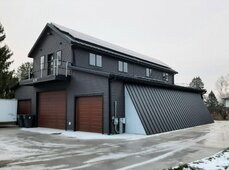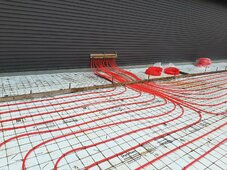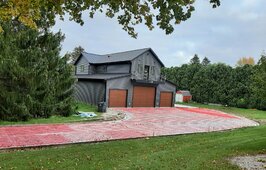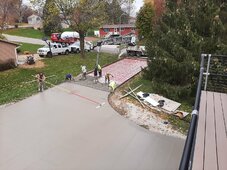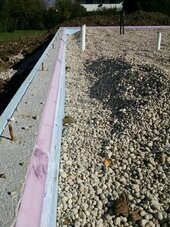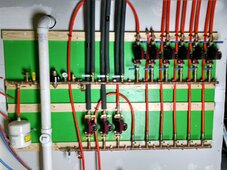I had planned on using solar hydronic panels. But the cheapest are $900 all the way up to $2600.
And they don't work that well, especially in the cold.
PV panels heating water electrically will work better, IMO.
Pumps water heater tanks. Going to have return water going into the first water heater cranked up to the max. The second tank. Will feed the outgoing Set at 55°to 65° so it doesn't shock the concrete when it's cold. Plus you only need 40° to 55° in the concrete to melt the snow well. I have built the lean-to to the best angle for winter solstice.
Is the strategy to store heat during a sunny day to melt snow on a cloudy one? Or do you only intend to melt snow when sunny?
In my mind, what you want is a large insulated tank. When you have sun, pump water past an electric heating element driven by the PV panels and heat the tank up as hot as you dare. The larger the tank and the hotter the water, the more energy you store.
When you want to melt, a second pump flows water through the driveway piping. Prior to the pump, you install a mixer that mixes the tank hot water with the return water bypassing the tank. This way, you can set an output temperature that is sane (say 60 F) and you will use only that hot water you need to raise the return water to the target. This maximizes the effectiveness of the heat transfer. This can occur even when there is no sun as long as you have pump power. If there is sun, then the first pump can be also running topping up the tank.
I ran a few numbers (which might be wrong). For a 2000 SF driveway covered in 5 inches snow (0.5 inch water equivalent), that is 623 gallons of frozen water which will require 210 KWH of energy to melt it and that's just the phase change. You won't have perfect heat transfer, and you do have some temp rise to deal with, so maybe 400 KWH to do the job. That is a lot! I compute you need about 1200 gallons of 80 C water to have stored enough energy to do this.
You might be better off using the solar electricity to run a geothermal heat pump which would give you a COP of about 4. Every watt you put into it results in 4 watts of heat.
I would carefully run the numbers to see how practical this will be. The guidelines for a snow melt system are about 40 watts per SF, so 2000 SF driveway is 80 KW. It doesn't really work to put in small amounts of energy as the heat dissipates before it can melt anything, you really have to up the power to get the job done.
Man, I sure hope my numbers are wrong and I've made a mistake somewhere.
Mike C.



